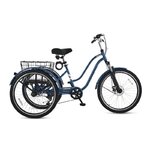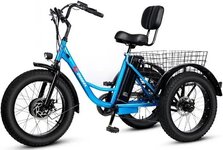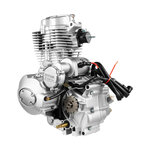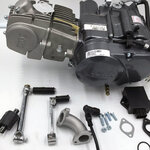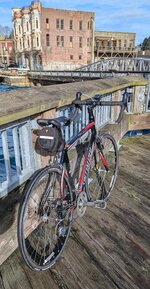That may only happen on a steep descent. A normal e-bike is nimble and you'd rather avoid the pothole. While a fat bike would ride straight onto it.
How even can roadies ride steep descents on their 28 mm tyres?
You just jump onto the curb. A fat bike is too heavy to do that.
Any MTB will do that. Suspension.
Any MTB will do that. An MTB is nimble, a fat bike tries to ride like a tank.
On the latest XC ride, the group leader had as many as six punctures on his fat bike. No other rider (except one) experienced a flat. I rode XC trails on 42 mm tubeless tires on the same ride.
The group leader is fond of GoPro and a drone. I could watch his ride in his own video. It was fascinating to see how he was losing control while riding over tree roots on his 4.4" Jumbo Jims.
I rode in a race that lead through singletracks and gravel roads of very varying quality, sand and potholes:
View attachment 186338
Those were 700x47 mm tubed gravel tyres, and a 50 mm front suspension. I achieved the max speed on a steep descent full of potholes and with patches of sand in the forest. I hope you'd survive that race on a fat e-bike

Especially when you had to carry the e-bike above terrain obstacles
 View attachment 186339
Tell me something I don't know
View attachment 186339
Tell me something I don't know 


